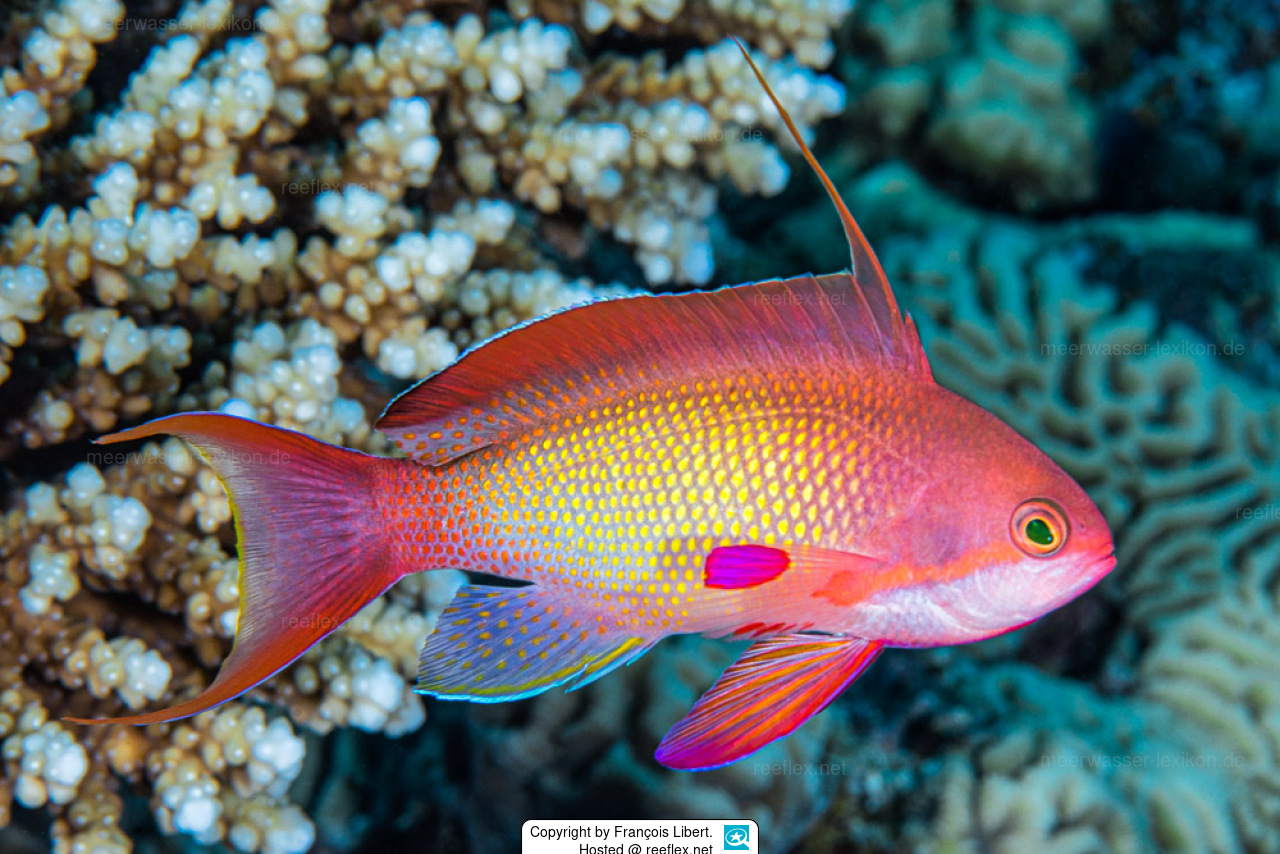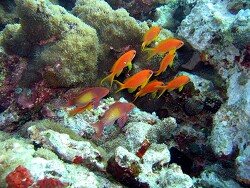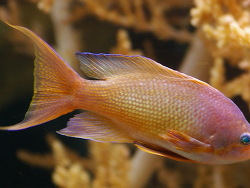Info
The flag perches (Anthiadinae) belong to the family of the sawfishes and live with over. 200 species in tropical and subtropical seas. The flagfishes are very colorful.
Pseudanthias squamipinnis is probably one of the FISH par excellence in marine aquaristics.
It has great colors and is not very sensitive, at least if you compare it with other fishes of the same species.
So little sensitive to disease, little sensitive to temperature, and it is also one of the fish that is relatively easy to get used to frozen food.
One must not forget that Anthias are all permanent eaters, but this can hardly be offered to them in the aquarium. On the other hand, the amount of food in the aquarium is usually more abundant than in the sea.
We have made the experience, that many Anthias can be fed much faster, if you put new fish to old ones of the same species.
This way they quickly learn to eat the food and do the same.
You should never keep these Anthias singly or as a pair, but in a group of at least 5 animals, which is appropriate for the species and the way of life in the sea.
If you don't have a male with you (you can tell), that's no problem.
One of the females (the most dominant), will turn into a male and then do his job of dominating the ladies.
The feeding intervals should be much more generous in the beginning (see Manuela's report), later it is sufficient if they get something twice a day.
They should never be hungry, but this is true for all fish.
Experiences of Manuela Kruppas:
I feed our five flagfish at least three times a day, but often up to six times. I make sure that in the evening, after the lights have gone out, every flag perch has gone to sleep. If there is still one foraging in the current, I give it some more frozen food.
After that, this fish also disappears, full eaten, in his cave and sleeps. In my opinion, regular feeding during the day is very important. I feed at least three times a day with thawed Artemia and frozen food (at noon, in the afternoon and in the evening).
In addition, I feed mysis and other frozen foods, some vitaminized.
My observation:
If the flag perch are satisfied and full in the aquarium, they always swim together. If there is not enough food in the aquarium, so that not every perch gets enough, each perch is "afraid" not to get enough, then they separate and each chases his food alone.
They then do not swim in the shoal!
Synonyms:
Anthias cheirospilos Bleeker, 1857
Anthias gibbosus Klunzinger, 1884
Anthias lepidolepis Bleeker, 1857
Anthias sqamipinnis (Peters, 1855)
Anthias squamipinnis (Peters, 1855)
Anthias squammipinnis (Peters, 1855)
Franzia squamipinnis (Peters, 1855)
Pseudanthias squammipinnis (Peters, 1855)
Serranus squamipinnis Peters, 1855







 François Libert, Frankreich
François Libert, Frankreich




















































































